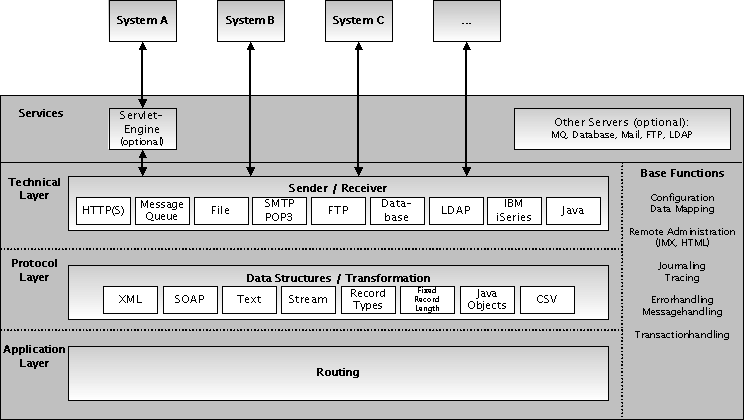The technical layer is responsible for the communication with other systems. This includes both: sending data
as well as receiving data from other systems. One class implementation exists for every technical protocol (e.g. HTTP, File, MQ).
This class includes all technical aspects of the specific communication protocol.
The classes of the technical layer do neither interpret nor format the data. Receiver classes receive the
data from the technical counterpart and pass it directly to the protocol layer. Sender classes receive
the data from the protocol layer and send it by using the respective technical channel.
Technical Layer has more
details about all modules of this layer.


